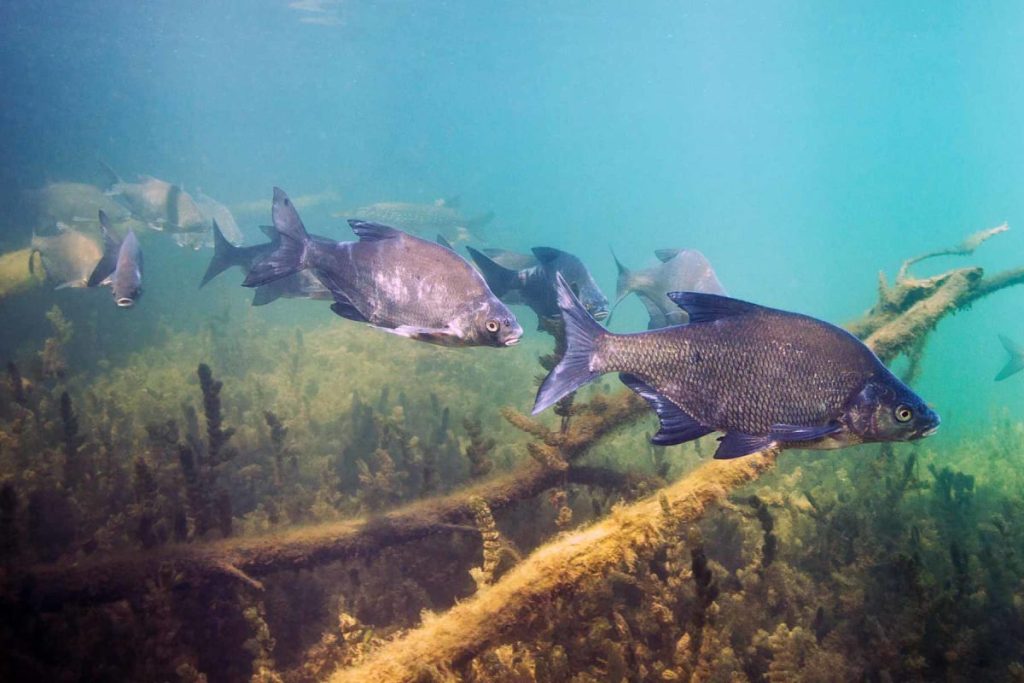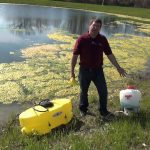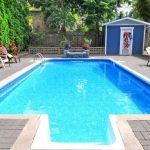Stocking a pond can cost anywhere from $250 to $2,000, depending on factors such as pond size, species of fish, and desired stocking density. In addition to the cost of the fish, you may also need to consider expenses for pond preparation, transportation, and any necessary permits.
Before stocking your pond, it’s essential to consult with a fisheries biologist to ensure the proper balance of fish species and to evaluate the health and condition of your pond. By doing so, you can determine the best stocking plan that suits your budget and goals for your pond.
Avoid overstocking, as it can lead to poor water quality and fish stress, diminishing the overall success of your pond stocking endeavor.
Factors Affecting Pond Stocking Costs
Factors influencing pond stocking costs include fish species selection, pond size, stocking densities, and supplemental feed requirements. Proper planning is key to ensuring the most cost-effective approach for stocking a pond. Consulting with experts can help optimize stocking costs while promoting a healthy aquatic ecosystem.
Size Of The Pond
Type Of Fish To Be Stocked
Delivery And Transportation Costs

Credit: www.projectgridless.ca
Calculating The Initial Investment
Pond Preparation Costs
Includes expenses for digging, lining, and filling the pond with water.
Fish Stocking Costs
Comprises the price of the fish species you want to stock in your pond.
Additional Equipment And Supplies
Covers the cost of aeration systems, filters, and maintenance tools.
Maintenance Costs
Stocking a pond can come with various maintenance costs, including the purchase of fish, aquatic plants, and regular feed. The overall expense depends on the size of the pond and the desired quantity and variety of species to be stocked.
Factors like fish stocking density and pond nutrition should be considered when estimating maintenance costs.
Feeding And Nutrition
Taking care of the feeding and nutrition needs of the fish in your pond is an essential aspect of pond maintenance. Providing a balanced and nutritious diet is crucial for the health and growth of the fish. The exact cost of feeding and nutrition will vary depending on factors such as the size of your pond and the number and type of fish you have. To ensure your fish receive the necessary nutrients, you have a few options. Some pond owners choose to rely on natural food sources, such as insects and algae, to supplement their fish’s diet. Others prefer to use commercially available fish food, which comes in various forms like pellets or flakes. These foods are specifically formulated to meet the dietary needs of different fish species. If you choose to use commercial fish food, the cost will depend on the quantity and quality of the food you purchase. It’s important to research the nutritional requirements of your specific fish species and choose a food that meets those needs. This will help to optimize their growth and overall health.Water Quality Management
Maintaining the water quality in your pond is crucial for the well-being of your fish. Poor water quality can lead to various health problems and even death in extreme cases. To ensure optimal water quality, you may need to invest in certain equipment and supplies. Regular monitoring of water parameters such as pH levels, ammonia, nitrate, and oxygen levels is essential. Testing kits are readily available and can be used to measure these parameters. The cost of these kits will vary depending on their quality and the number of tests they can perform. Some pond owners may also need to invest in filtration systems to maintain water quality. Filtration systems help to remove debris, excess nutrients, and harmful substances from the water. The size and complexity of the filtration system you choose will impact its cost.Healthcare And Disease Management
Maintaining the health of your fish and managing diseases is another crucial aspect of pond maintenance. Fish can be susceptible to various diseases, parasites, and infections, and prompt action is necessary to prevent outbreaks and minimize their impact. Regular check-ups and observations are necessary to detect any signs of illness or distress among the fish. If any unusual behavior, such as swimming erratically or noticeable physical abnormalities, is observed, it is essential to consult a fish veterinarian. The cost of veterinary services and medications will vary depending on your location and the specific treatment required. Preventive measures such as vaccinations and quarantine procedures can also help in disease management. It is important to have a separate quarantine tank to isolate any new fish before introducing them to your main pond. By investing in proper feeding and nutrition, water quality management, and healthcare and disease management, you can ensure the overall health and well-being of your pond and its inhabitants. While the exact maintenance costs will vary depending on the size and complexity of your pond, prioritizing these aspects will help you create a thriving aquatic ecosystem.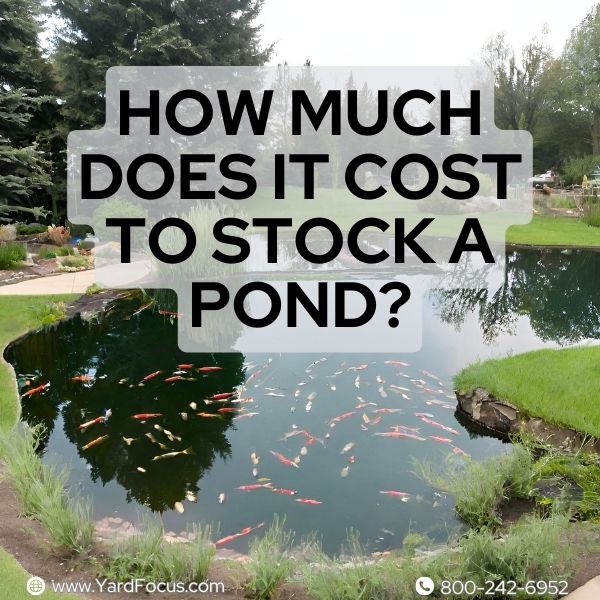
Credit: www.yardfocus.com
Long-term Costs
Stocking a pond can incur a range of long-term costs, including fish feed, water quality management, and potential disease treatments. It’s essential to consider the ongoing expenses when calculating the total cost of maintaining a stocked pond, as they can significantly impact your budget over time.
Growth And Harvesting Costs
One of the long-term costs associated with stocking and maintaining a pond is the expense of growth and harvesting. As your fish population grows, you will need to invest in feeding them and providing suitable habitat for their survival. Feeding costs include purchasing fish feed and ensuring a regular supply of nutrients to promote healthy growth. Additionally, you may need to invest in equipment such as aerators or water pumps to maintain water quality and ensure a thriving fish population.
Bold and underline important fact: Fish feed and habitat maintenance contribute to the long-term expenses of stocking a pond.
Restocking Costs For Fish
Another significant long-term cost is restocking your pond with fish. Fish populations naturally fluctuate over time due to predation, disease, or natural mortality. To maintain a desirable fish population, you may need to periodically replenish your pond with new fish. This can involve expenses such as purchasing new fish fingerlings or adult fish, transportation costs, and any necessary permits or licenses. Restocking your pond ensures a balanced ecosystem and maintains its productivity.
Bold and underline important fact: Restocking ponds with fish ensures a balanced ecosystem and maintains productivity.
Expenses For Pond Upgrades
Pond upgrades and maintenance are essential for the long-term sustainability of your stocked pond. Over time, you may need to invest in upgrades or renovations to improve fish habitat, water quality, or recreational opportunities. Some common pond upgrades include the installation of spawning structures, managing aquatic vegetation, construction of fish attractors, and adding artificial fish cover. These expenses are necessary to enhance the overall health and productivity of your pond, ensuring it remains an enjoyable and sustainable resource.
Bold and underline important fact: Pond upgrades contribute to the overall health and productivity of the pond.
Comparing Different Pond Stocking Options
When it comes to stocking your pond, it’s important to consider the options available to you. Comparing different pond stocking options can help you determine the most cost-effective choices for your budget and pond size. In this article, we will explore the cost-effectiveness of different fish species, analyze expenses for different pond sizes, and discuss budget-friendly maintenance techniques.
Cost-effectiveness Of Different Fish Species
Choosing the right fish species is crucial for maintaining a budget-friendly pond. Different fish species have varying costs and growth rates, which can impact your overall expenses. Let’s take a look at some popular fish species and their cost-effectiveness:
| Fish Species | Cost per Fish | Expected Growth Rate |
|---|---|---|
| Tilapia | $2.50 | Fast |
| Catfish | $3.00 | Moderate |
| Bluegill | $1.00 | Slow |
| Bass | $4.00 | Moderate |
- Tilapia is a popular choice for its low cost and rapid growth rate, making it a cost-effective option for stocking your pond.
- Catfish has a moderate cost and growth rate, making it a suitable choice for those looking for a balance between cost and growth.
- Bluegill has a slow growth rate but is the most affordable option, making it ideal for budget-conscious pond owners.
- Bass has a moderate cost and growth rate, making it a popular choice for those interested in sport fishing.
Expense Analysis For Different Pond Sizes
The size of your pond can significantly impact the expenses associated with stocking and maintenance. Let’s examine the expense analysis for different pond sizes:
| Pond Size (Acres) | Stocking Expense | Maintenance Cost (per Year) |
|---|---|---|
| 0.5 | $250 | $200 |
| 1 | $400 | $300 |
| 2 | $800 | $500 |
| 5 | $2000 | $1000 |
- Ponds with smaller sizes, such as 0.5 or 1 acre, have lower stocking expenses and maintenance costs, making them more budget-friendly options.
- Larger ponds, like those with sizes of 2 or 5 acres, require higher investment in terms of stocking and maintenance costs.
- Consider your budget and available resources when choosing the size of your pond to ensure it aligns with your financial capabilities.
Budget-friendly Maintenance Techniques
Maintaining your pond doesn’t have to break the bank. Here are some budget-friendly maintenance techniques to consider:
- Regularly check the water quality and pH levels to prevent potential issues that may require costly treatments.
- Utilize natural methods such as floating plants or strategically placed rocks to help filter and maintain water clarity.
- Properly balance the fish population in your pond to prevent overcrowding, which can lead to increased maintenance needs.
- Implement routine cleaning and debris removal to promote a healthy environment for your fish and minimize the need for expensive interventions.
- Consider using natural predators, like ducks or turtles, to control unwanted pests without relying on chemical treatments.
By applying these budget-friendly maintenance techniques, you can keep your pond in optimal condition without breaking the bank.
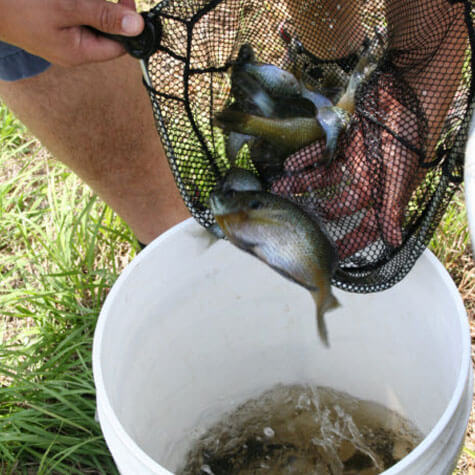
Credit: www.purinamills.com
Optimizing Costs For Pond Stocking
Stocking a pond with fish can be a rewarding endeavor, but it’s important to consider the costs involved. By optimizing your pond stocking strategies, you can maximize the value of your investment while minimizing expenses. Here are some key areas to focus on when aiming to optimize costs for pond stocking:
Efficient Feeding Strategies
Implementing efficient feeding strategies can help reduce the overall cost of pond stocking. By utilizing a balanced feed that meets the nutritional needs of the fish, you can promote healthy growth and minimize waste. Additionally, scheduling regular feeding times and monitoring feed consumption can prevent overfeeding and reduce the amount of feed required.
Cost-effective Water Management
Effective water management is crucial for optimizing pond stocking costs. Utilizing sustainable water sources such as rainwater harvesting and implementing proper water circulation systems can reduce the need for expensive supplemental water sources. Monitoring water quality and implementing appropriate aerators can also promote a healthy pond environment and reduce the risk of costly water treatments.
Strategies For Minimizing Healthcare Costs
Minimizing healthcare costs is essential for optimizing pond stocking expenses. Implementing biosecurity measures to prevent the spread of diseases, conducting routine health assessments, and promptly addressing any signs of illness can help minimize the need for costly treatments and interventions. Additionally, investing in high-quality stock from reputable suppliers can reduce the risk of disease outbreaks and potential expenses associated with fish health issues.
Planning For Unexpected Costs
Emergency Healthcare And Treatment
Dealing With Natural Disasters
Adapting To Market Fluctuations
Considering Non-financial Costs
Considering Non-Financial Costs:
Time And Labor Investment:
Stocking a pond requires significant time and physical effort for maintenance.
Environmental Impact And Sustainability:
Consider the ecosystem balance and long-term sustainability of pond stocking.
Incorporating Recreation And Aesthetic Value:
Enhance the pond with recreational activities and visual appeal for overall value.
Conclusion
Stocking a pond comes with varying costs based on factors such as size and species. It’s important to consider the long-term benefits and enjoyment that a well-stocked pond can bring. By investing wisely, you can create a thriving aquatic ecosystem that enhances your property and your overall well-being.


